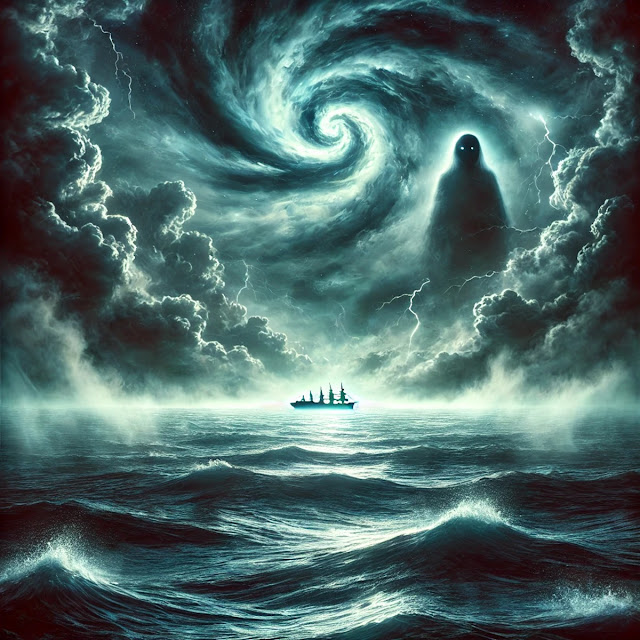 |
| Illustrative image: ChatGPT |
The Bermuda Triangle, a mysterious area in the western part of the North Atlantic Ocean, has intrigued scientists, historians, and adventure-seekers for decades. Also known as the "Devil's Triangle," this region, roughly defined by the points of Miami, Bermuda, and Puerto Rico, has been linked to unexplained disappearances of ships, aircraft, and even people. Stories of vessels vanishing without a trace, often in calm weather, have made the Bermuda Triangle one of the most enigmatic locations on Earth.
The Bermuda Triangle first gained widespread attention in the 1950s when several high-profile disappearances were reported. One of the earliest and most famous incidents was the disappearance of Flight 19, a group of five US Navy bombers on a training mission in 1945. Despite clear weather and experienced pilots, the planes disappeared after reporting disorientation and confusion over their position. No wreckage was found, and a search aircraft sent to rescue them also vanished. This incident fueled speculation about supernatural or unexplained forces at play in the Triangle.
Throughout the years, numerous theories have been proposed to explain the disappearances. One of the simplest explanations is that the Bermuda Triangle experiences a high volume of traffic, increasing the likelihood of accidents. This theory suggests that there is nothing particularly mysterious about the area itself, but that the sheer number of ships and planes passing through it results in a higher chance of mishaps.
Some researchers argue that natural phenomena are responsible for the Bermuda Triangle's reputation. The area is known for sudden and severe weather changes, with powerful thunderstorms, waterspouts, and strong ocean currents that can capsize vessels. Additionally, methane gas deposits found in the ocean floor may release large bubbles of gas, causing ships to lose buoyancy and sink. This phenomenon, known as the "methane hydrate hypothesis," suggests that a sudden release of methane could destabilize ships or interfere with aircraft instruments, potentially leading to accidents.
Others attribute the mystery to magnetic anomalies. Compasses usually point to magnetic north, but in certain areas of the Bermuda Triangle, they may point directly to true north. This "compass variation" might have caused navigational errors, particularly before modern navigational aids were widely used. Pilots and captains, unaware of the variations, may have found themselves off course, leading to accidents or disappearances.
More fantastical theories have also emerged, adding to the mystique surrounding the Bermuda Triangle. Some believe the area may be a gateway to another dimension, a wormhole, or even an underwater alien base. These ideas, while lacking scientific support, have captured the public's imagination and fueled countless books, movies, and documentaries exploring the Bermuda Triangle's secrets.
In recent years, advancements in technology have provided new insights into the Bermuda Triangle. Satellite imagery, sonar mapping, and other modern tools have helped researchers understand the area’s geography and climate patterns. Many scientists now believe that while the Bermuda Triangle holds some natural dangers, it is not inherently more hazardous than other heavily trafficked regions of the world. However, the lack of definitive answers has kept the legend alive, with the mystery of the Bermuda Triangle continuing to captivate and puzzle people worldwide.
The Bermuda Triangle remains a fascinating subject, with a blend of scientific theories and speculative ideas surrounding it. Whether due to natural conditions, human error, or simply legends that have grown over time, the mystery endures, making the Bermuda Triangle a symbol of the unexplained and the unknown in our modern world.
Comments